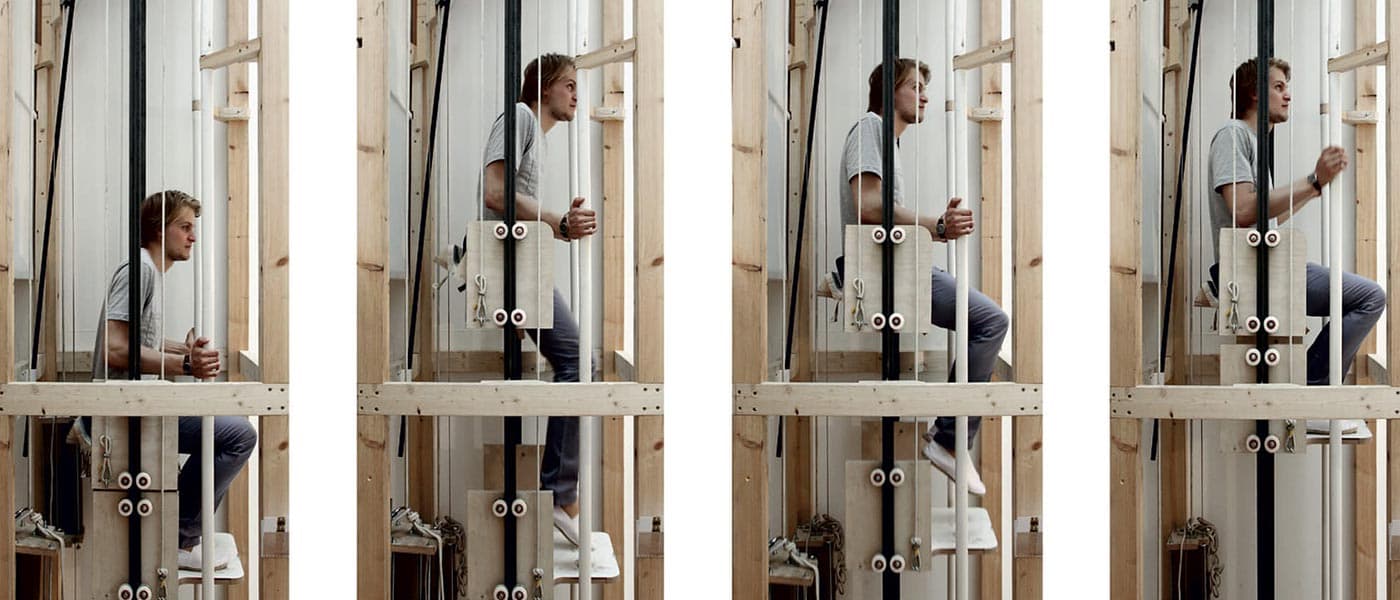Human Power
Even as our cities get more crowded and its buildings get taller, it seems that we have yet to find a more energy efficient way to navigate this high-rise environment. Right now, our options are limited to stairs, escalators, and elevators—all of which are expensive, require constant maintenance, and take up a lot of space.
Enter Rombout Labs and their concept of "vertical walking." Their technology is designed to allow humans to move between building floors without the need for any sort of power supply, also using less effort than we would if we were using stairs, and making optimal use of available vertical space. “By using harmonious movements and smart materials, only 10% of the effort of walking stairs is needed to bridge multiple floors. This not only provides a solution for the growing number of people who are unable to take stairs, but moreover offers new possibilities for urban architecture,” they explain on the Dutch Design Week website, where the system is currently featured.
Check out how Vertiwalk works in this video:
Vertiwalk
Rombaut Labs’ smart staircase may be the solution the world doesn’t even know it needs. Stairs have long been an inherent part of vertical architecture, but it proves to be restrictive for the ageing population and people with disabilities. The alternative, escalators and elevators, are not only expensive, but also wholly dependent on energy. The simple system of vertical rails employ pulleys and a gripping system that helps people move up and down between floors, making it easy even for the disabled to operate the system. The creators state that an amputee and a sufferer of Multiple Sclerosis (MS) were able to successfully use the Vertiwalk.
Still in its prototype stage, the Vertiwalk’s ability to provide inclusive mobility has attracted a lot of attention. It will be included in the prestigious Venice Architecture Biennale and is currently on display at the Dutch Design Week in Eindhoven.
Share This Article
